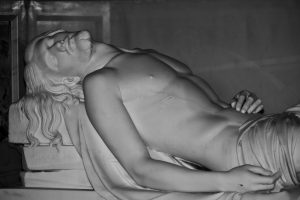 Stan Dragland, literary critic, editor, novelist, and poet will present the annual Newfoundland Historical Society (NHS) George Story Lecture.
Stan Dragland, literary critic, editor, novelist, and poet will present the annual Newfoundland Historical Society (NHS) George Story Lecture.
The lecture takes its name from George Morley Story (1927-1994), past president of the NHS and winner of the NHS’s Heritage Award for 1982-1983. Dr. Story joined Memorial University’s Department of English Language and Literature in 1954, where he established an international reputation as a lexicographer and Renaissance scholar, and pioneered the study of Newfoundland history, culture, language and literature.
Dragland in his presentation will discuss the celebrated Newfoundland painter, Gerald Squires. His presentation is based on his research for the long essay in a new book on Squires timed to appear alongside Squires’ 2017 retrospective—opening at The Rooms, May 12th.
The lecture promises to explore the many sources now available—not only the pictures and sculptures, the criticism and interviews, but also the wealth of archival material preserved by Gail Squires and held in Holyrood.
Especially important are Squires’ own eloquent writings, many of them never published, some of them chosen to grace the lecture. Dragland explores the painter’s passionate grasp of archetypal impulses—heaven and hell contending in his personal cosmology—and tries to suggest how such tensions are embodied in his pictures. An important sub-theme is Squires’ deep-seated ecological consciousness, more relevant and valuable than ever in the context of accelerating threats to the biosphere.
Lecture and illustrations will present Squires as he is well-known and well-loved, but also with dimensions that are not common knowledge. The viewer/listener may also expect to see and hear about some surprising images that came to light after Squires’ death.
Location: Hampton Hall, Marine Institute
Date: Thursday, April 27, 2017 Time: 8pm
Parking: Free parking is available in front and to the west of the building.
Please circulate to family, friends and colleagues.
For more information:
Tel:(709)722-3191 E-mail: nlhistory@gmail.com
Recommended Exhibit: Gerald Squires: Spirit Visible from May 13 – September 4, 2017 at The Rooms.
